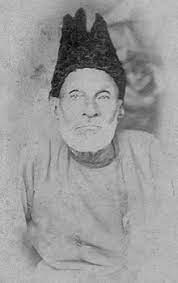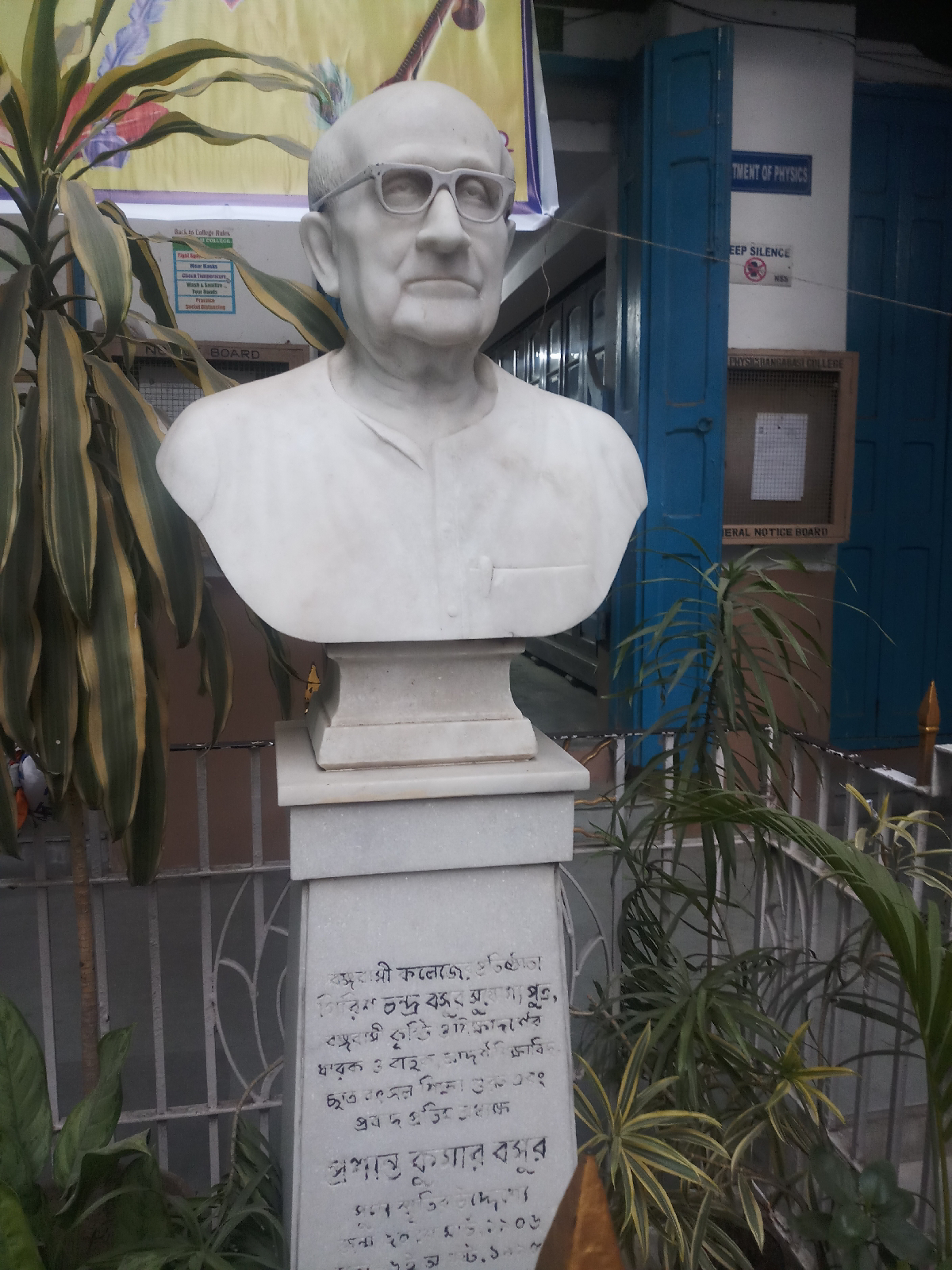Taki College, Taki city and the Martin Train
- The town of Taki lies between Hasnabad and Basirhat in North 24 Parganas, on the banks of Ichhamati River at the Indo-Bangladesh border. The place has a layered history steeped with cultural, political and educational evolution. In Pre-independent India, Taki was a part of the Jessore district of undivided Bengal. The influential zamidar family of the Roychoudhury played a pivotal role in bringing about educational and social reforms.
 |
| On the shores of Ichhamati River |
- The river was formerly known as Jamuna-Ichhmati and the establishment of the town can be traced back to more than 400 years to the time of Emperor Jahangir.
- In the 16th century a descendant of Raja Pratapaditya, Krishnadas Roychoudhury established the place. A traditional story goes that a king by the name of Raja Adisur performed a yajna with 5 brahmins and 5 kshatriyas. One of them was Virat Guha whose descendants are the well known zamindars of Taki, who later earned the title Roychoudhury. Mansingh, the army chief of the Mughal Empire along with his soldiers, is said to have dwelled in the jungles of Taki for about a year, while fighting revolting subjects at Jessore.
- The place is close to Sunderbans and gets its name from the word ‘tank’. The zamindars were said to exploit the poor though some were benevolent as well and even actively participated in the Bengal renaissance movement. Of them, Ramkanta Roychoudhury held high official position in the Government under Warren Hastings. The 8th descendant of the zamindar family, sons of Ramsantosh established four palaces in four directions. Of them one is in extreme ruins while the others have been destroyed by the encroaching river.
- Taki served as a vital transit point and refuge of people from the opposite banks of Ichhamoti, the districts of Khulna and Satkhira during the Bangladesh Liberation War, 1971. The area was used for providing relief and resistance activities by both India and Bangladesh.
- Kalinath Munshi, a close associate of Raja Rammohan Roy and Dwarkanath Tagore, established the first educational institution Taki Academy in 1832. Kalinath Roychowdhury of the erstwhile zamindar family played a pivotal role in its establishment. It was visited by William Bentick and other European missionaries and had their prize distribution ceremony at the Calcutta Town Hall. This school was later shifted to Baranagar.
- The Taki School (English-medium school for girl students) was established in 1861 under the patronage of Rajmohan Roychoudhury, Ishanchandra Roychoudhury and others, just 13 years after Bethune School, and thus played a significant role in women education. In 1881, this school was merged with a local Bengali medium school to establish Taki Government School.
- Taki Government College as established on 15th September, 1950. The need for a college was first laid down by Taki Sammilani. The proposal was brought into reality by Harendranath Choudhury, an illustrious member of the Taki zamindar family and the then education minister in the cabinet of Dr. Bidhan Chandra Ray (chief minister of West Bengal). This venture was taken to cater to the need for higher education of the people of Sunderbans areas and the immigrants from the neighboring country. The college initially started as an intermediate college at the premises of the Taki Government School. Amidst several speculations on the success of a remote college, its journey began under the leadership of Bagala Kishore Ray and nine teachers. In 1851, Bidhubhusan Ghosh took charge as Principal and the science department of the fast expanding college was shifted to the residence of Mohitkrishna Kundu. A new building was established in the academic year 1957-58. In 1960, Pre-University course and B.A. course was initiated. B.Sc courses were started in the academic year 1967-68. The college is noted for its well stocked library.
- The Taki library is an ancient one frequented by Sarat Chandra Bose and Acharya Prafulla Chandra Roy. Taki Municipality was established in 1869 and visited by Netaji Subhash Chandra Bose in 1926. General Sankar Roychoudhury, former Chief of Army, hails from Taki.
- Taki is famous for the Durga Puja idol immersion, when the East and West Bengal people celebrate together. The boats plying on the mighty Ichhamati river put up the flag of India or Bangladesh to proclaim their nationality. Chanar malpoa, jaggery and honey are also famous here.
- Golpatar jungle, also called mini Sunderbans because of its exuberant mangrove vegetation is a 40 mins ride from Taki. The area derives its name from the mangrove plant Golpata (Nypa fruticans), commonly known as Nipa palm. The plant is extensively used by the local people as thatching material and the fruits are edible. It bears large flowers of bright yellow colour which is worth viewing during the month of March and large fruits are borne from October to November. This calm and picturesque destination at the Indo Bangladesh border is now frequented by visitors. The Border Security Force maintains strict vigilence all day. The place is called as 'Mini Sunderbans' due to the saline soil are trees like Baine (Avicennia sp), Genwa (Excoecaria agallocha), Garjan (Rhizophora apiculata), Sundari (Heritiera fomes), Kankra (Bruguiera gymnorrhiza), Garan (Ceriops tagal), Keora (Sonneratia apetala) and several others.
- Taki is a well known tourist spot with several hotels and resorts overlooking the mighty river. Jora Shib mandir, Kali mandir, Ramkrishna Mission, Machranga dwip are the places of visit.
 |
| The Gopata tree in flowering condition |
 |
| The Golpata tree |
 |
| View of the Ichhamati River |
 |
| Clouds looming over the lush green rice fields |
 |
| India and Bangladesh shorelines on either side of Ichhamati River |
 |
| Mangrove breathing roots or pneumatophores |
 |
| Jora Shibmandir |
 |
| Sunrise by the Ichhamati River |
 |
| The first installed water pump |
 |
| Places of tourist interest displayed at the river bank |
Sir Rajendranath Mukherjee, of Basirhat, and his company Martin and Company set up the "Barasat-- Basirhat Light Railway Company" to aid the connectivity of Calcutta with the districts of Basirhat, Dhanyakuria, Taki and Hasnabad in 24 Parganas. The contract was signed with the Martin Company in 1897. Work of the Barasat-Basirhat line began in 1903. Rail service began in 1905. The Patipukur - Beleghata Bridge, contract and work started in 1908. Railways began operating in 1910. One thing needs to be clear here --- this Beleghata, not the 'Beleghata' near Kolkata. The distance between Beleghata and Barasat is 9 miles. The stations from Patipukur to Beleghata Bridge were Patipukur, Baguiati, Hatiyara, Narayanpur, Rajarhat, Langalpota, Haroa Khal, Kharibari, Aminul, Beleghata Bridge. The stations from Beleghata to Hasanabad were Deganga, Berachampa, Sarupnagar, Dhanyakuria, Arbelia, Shikra Kulingram, Kholapota, Maitrabagan, Basirhat, Basirhat Kachari, Dandirhat, Shakchura and Hasnabad. From Barasat, this railway line was parallel to the south of Jessore Road. The Martin's train sped through the familiar neighborhood, passing through the dense green, making a croaking noise. Fish, cottage cheese, vegetables, milk, etc. used to be transported from Taki, Hasnabad, Basirhat by the traders. The introduction of the Hasnabad train service from Shyambazar facilitated the movement of people from large areas of the 24 Parganas district to Calcutta. On 1st July 1955, this railway service was disrupted. On 9th February 1962, the then Railway Minister Babu Jagjivan Ram inaugurated the Barasat --- Basirhat --- Hasnabad Broad Gauge Railway. This railway is now functional however the route is different from that taken by the historic Martin train.
1. Taki Government College, 75th year: Memories and Recollections Ed. Dr. Shanta Mukhopadhyay
2. Interviews from local people




Comments
Post a Comment